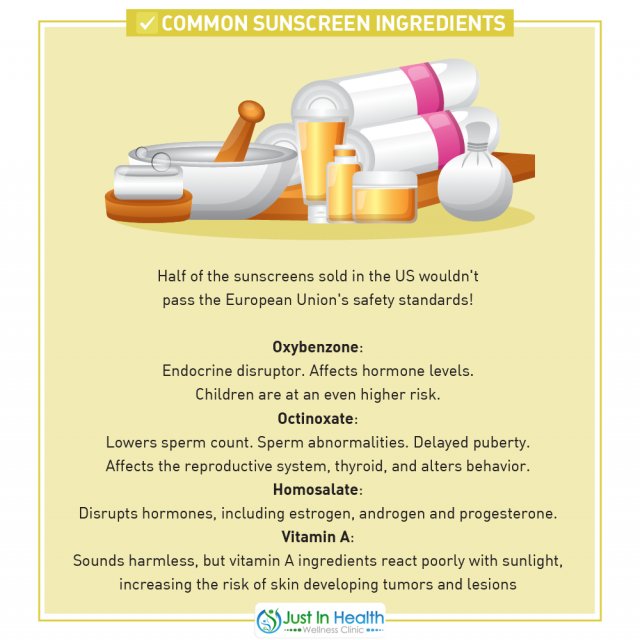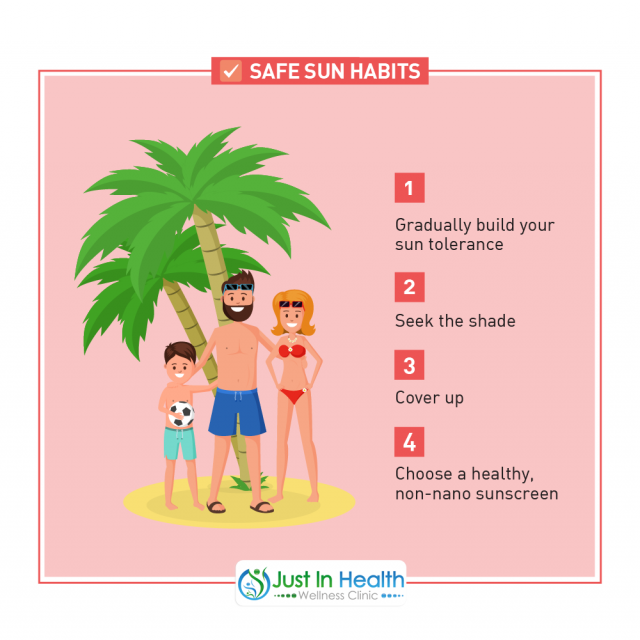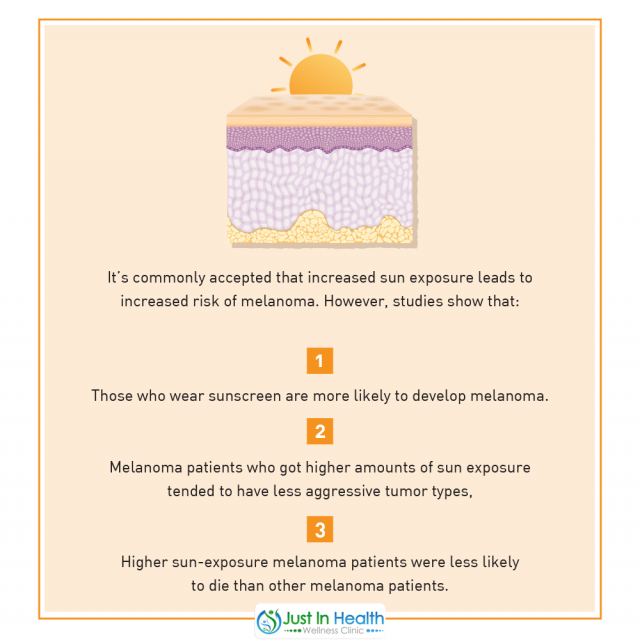

By Dr. Justin Marchegiani
Summer is upon us, which means vacations, BBQs, poolside lounging, and all-around more time outdoors! I have previously discussed the benefits of sunshine and spending time outside, however, for many of us, our sun exposure will be shooting up pretty quickly with the changing of the seasons. If you haven’t built your “sollar callus,” you may be more prone to burning in the sun. The most common way we are taught to prevent sunburn is by using sunscreen. Today I want to talk to you about the pros and cons of using sunscreen, and the safest ways to protect yourself against sunburn and skin cancer.
This year the Environmental Working Group (EWG) published a report with shocking results: nearly two-thirds of sunscreens on the market don’t actually work, or contain worrisome ingredients that are absorbed into the body. The United States tends to have very lax safety standards regarding skin care ingredients. In fact, about half of the sunscreen sold in the US wouldn’t pass the European Union’s safety standards!

Here are some common ingredients you can find in sunscreens sold in the United States:
A major problem with many ingredients in sunscreen (and other skin care products) is that there really just hasn’t been enough research done to prove their safety. And from the little we do know, all signs point to avoiding these ingredients.
We know our skin is our largest organ and absorbs what you put on it. This is why the ingredients in all personal care products matter, especially for the products that we apply and leave on, like sunscreen and lotion.
Firstly, avoid spray sunscreens. Inhaling these ingredients pose a whole new set of health dangers, and it’s hard to apply them correctly. The FDA has even raised concerns regarding spray-on sunscreen. Plus, using spray-on sunscreens subjects anyone in the vicinity to breathing in these airborne toxins.
It's important to note that SPF can be misleading. When you properly apply SPF 50 sunscreen, it blocks 98 percent of UVB rays; SPF 100 blocks 99 percent. The misinformation regarding SFP values leads consumers to believe they are more protected than they actually are. This false sense of protection causes sunbathers to spend more time outside, applying sunscreen less frequently, and ultimately, higher incidence of sunburn.

In addition to the known toxic ingredients in sunscreen, about 40% of sunscreens contain the seemingly harmless vitamin A. While this sounds innocuous, studies show that vitamin A ingredients react poorly with UV rays, increasing the risk of skin developing tumors and lesions. It is recommended to avoid sunscreens, lip products, and skin lotions containing vitamin A, also listed as retinyl palmitate, retinyl acetate, retinyl linoleate, and retinol.
Badger is a widely available sunscreen that is EWG-approved. The sun protection comes from non-nano zinc oxide. Many mainstream sunscreens use “nanoparticles” which help the sunscreen absorb into your skin. While this helps the sunscreen rub all the way in so that it’s no longer visible, it also means you’re absorbing all of the ingredients into your skin and bloodstream.
The non-nano particles in a safe sunscreen such as the Badger brand mean that they are not readily absorbed. These are the sunscreens that will leave you with a little bit of a whitish-blue tint to your skin, but it’s much better than the alternative!
Click here to learn how to take your health to the next level!

Food for thought: The EWG reports that melanoma doesn't tend to appear on parts of the body that get daily sun exposure. Plus, people who work indoors are at a much higher risk for melanoma than those who work outside.

It’s commonly accepted that increased sun exposure leads to increased risk of melanoma. However, studies show that:
Now, this may be due to the toxicity of mainstream sunscreen ingredients. However, there are many ways to minimize sunscreen usage.
UV from the sun actually provides our bodies with an essential “stress” which signals to molecules on our skin to convert to the active form of vitamin D. Vitamin D is considered perhaps the most common medical condition in the world. Vitamin D deficiency has been linked to virtually all forms of cancer (prostate cancer, breast cancer, leukemia, gastrointestinal cancer, bladder cancer…), cardiovascular disease, and autoimmune disease.
The sun is perhaps our greatest healer, but we must respect its intensity. By practicing safe sunning practices, you can get vitamin D without burning or ingesting the toxic side effects of mainstream sunscreen ingredients!
Have more questions about sunscreen? Click here to talk to a professional!
https://www.ewg.org/sunscreen/
https://www.jabfm.org/content/24/6/735.full
https://www.ewg.org/research/cdc-americans-carry-body-burden-toxic-sunscreen-chemical
https://www.ewg.org/sunscreen/report/the-trouble-with-sunscreen-chemicals/